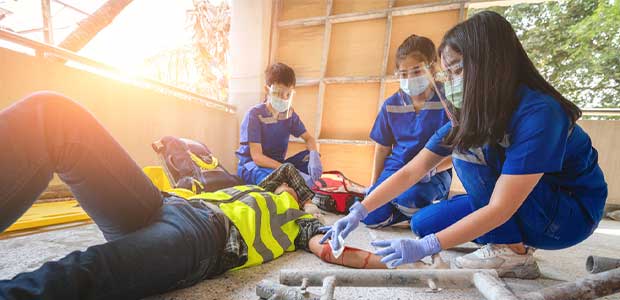
Study Shows Heat Injuries in the U.S. are found to be Undercounted
Thousands of heat injuries across the country went unaccounted for.
- By Shereen Hashem
- Jul 22, 2021
New research shows that government agencies are most likely significantly undercounting the number of workplace injuries caused by extreme heat. Federal and state labor departments keep track of heat-related injuries, which include aspects of dehydration and heat strokes. However, if a worker falls from a ladder due to heat conditions, it is usually not categorized as a heat related injury. Research published shows when those injuries are addressed, the toll of heat on U.S. workers is “orders of magnitude higher” than the official counts. In California, the state’s occupational safety division only counts about 60 heat-related injuries annually. The research, however, estimates that between 2001 and 2018, the number of heat-related injuries was around 24,800 each year.
“We expected heat would have impacts on other types of injuries, but the magnitude was surprising,” said A Patrick Behrer, who co-wrote the working paper with R Jisung Park and Nora Pankratz.
California law was taken advantage of which requires all employers to have workers compensation insurance, paying workers when they are injured at work. From 2001 to 2018, the researchers analyzed 11.6 million claims in the state, combining it with local weather data. This was done in order to gain an understanding of how many injuries can be attributed to extreme heat. What was found was that on days between 80- and 85-degrees Fahrenheit, a worker’s risk of injury increases by around 3.5 percent compared to a day in the 60s. On a day between 90- and 95-degrees Fahrenheit, the injury risk increases by about seven percent.
“I see a lot of people get injured because they’re working in the sun and get fatigued,” said Guillermo Oseguera, a 49-year-old boilermaker who works in Los Angeles. “You get frustrated because you’re hot. But nobody is going to come and do the job for you.”
According to an article, it takes a larger toll on low-wage workers, where the jobs tend to be more dangerous than high-wage workers. It is also found that indoor workers, such as those in manufacturing, are more likely to be injured in hot weather because they do not work in temperature-controlled environments.
About the Author
Shereen Hashem is the Associate Content Editor for Occupational Health & Safety magazine.